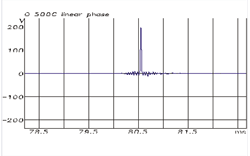That comment was made generally on the topic and not directed at yourself nor Dunlavy, etc. I've heard and measured the SC-VI's and was quite impressed with what was achieved. I also well remember Richard Hardesty's subwoofer comparisons and measurements from the late 90s I believe.
---- Also known as Dr. Boom.
Indeed, he had a very extensive series of articles on subwoofers with many of them reviewed.
And he explored the various methods of proper settings (phase, low-order x-overs, x-over points, etc.).
Also, dual subs are better than one. And multiple subs.
{I do have all his reviews and articles on subs from Widescreen, plus the Sub bible; Subwoofer Buyer's Guide with over 50 subs reviewed, specs on 296 subs, in the Fall/Winter 2000/01 special edition.}
...You are right, that series on subs was from the late 90s.
...And for music, no bigger than 12" driver(s). ...Preferably multiple smaller drivers, like 8" or 10". ...For them subs. And for the LFE channel only (movies), 18 inchers are perfect. :b
* I knew that your comment was general, but general here. :b
________________________
I've been busy today with 'master clock', 'jitter' stuff reading, analog stages, USB asynchronus, HDMI inputs, USB inputs, ...Oppo BDP-105 Universal 3D/4K Blu-ray player.
And on how to interpret correctly graph measurements; about distortion, different orders of harmonics, THD, IMD, smoothed Frequency Response, etc.
I guess the better your source it helps too at the end of that Time Alignment's line; all part of the total equation, not just the loudspeakers.

















